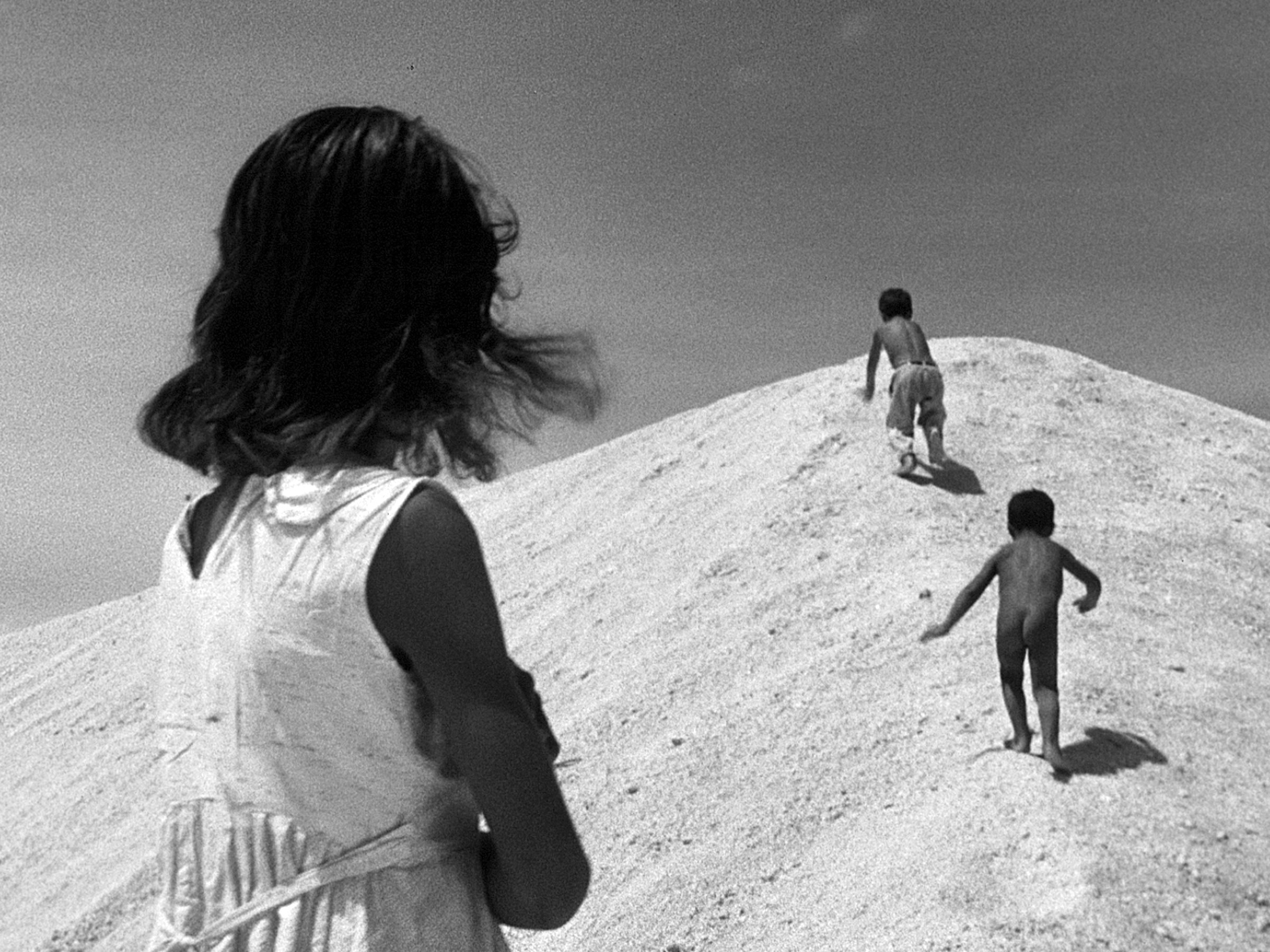
The Venezuelan peninsula of Araya is one of the dryest places on earth, exploited for over five hundred years due to its abundant salt mines. Director Margot Benacerraf captures the life of the salineros through breathtaking imagery, underlining the harsh life of this region – all of which vanished with the arrival of industrialization.
EN
“[...] what drew me most to Araya was not its austere, unforgiving beauty but the dignity of its inhabitants. I hope that the love I hold for them shines through in the film. There, in the middle of that desolate, forbidding place, they managed to turn the same elements that made their existence so difficult into their very means of survival.”
Margot Benacerraf1
“[...] The intense and perfect beauty of Araya deserves to be called by name. In order to accentuate it, Margot Benacerraf has made every act, situation, and real-life character into the servant of that beauty... Araya will always be the condensation of an awesome human experience... filtered through the admirable language of film... Great photography, great editing, the inflamed quest for modulated grays amid unforgettable extremes of black and white – that is what accounts for the visual pleasure that Araya offers. A period text and period music accompany a film that knows no period, a definitive work.”
Marta Traba2
“In those days, going to Araya was like going to the moon. After an arduous journey, I caught my first glimpse of Araya one afternoon about five o’clock. I saw a gigantic colonial castle in all its immense solitude, abandoned to those terrible deserts, and illuminated by an intense, glowing light. Then came those enormous salt peaks with their fantastic dimensions. It was as if the five centuries since the arrival of the Europeans had not perceptibly altered Araya’s way of life. The residents of Araya still made ceramics without using a wheel. They still used the same millenarian methods to fish and to harvest salt. Yet, everything was also about to be violently, irremediably transformed. Within six months, the salt operation was to be taken over by machines. I decided that I wanted to tell this story.
When the film was screened no one believed that we had only been a two-person crew. “What about the crane shots?” they asked. We had simply taken advantage of a construction crane that had been left on a building site. We would go up in it together, fighting against the wind. It was as heroic as it was fortuitous. Passion, I think, makes many things possible. We often filmed all day and then went out at night to collect sounds. Each of the families has a theme song. We would record this local music at night, in people’s huts. Or the sound of the sea, because I wanted the sea to have its echo throughout the film so the viewer feels its intensity, which is ever-changing.
There we were, Truffaut, Resnais and I in competition in Cannes with The 400 Blows, Hiroshima mon amour and Araya. The giants were also there: Buñuel with Nazarín and Rossellini with India. Glauber Rocha wrote a beautiful interview and years later told me that while Araya had no real consequence in Venezuelan cinema, in Brazil, it really did influence the Cinema Novo and him in particular. On 15 May of 1959, Cannes festival awarded me, and Venezuelan cinema, the coveted International Critics Award, which I had the honour of sharing with Hiroshima mon amour. Even today, the recollection of those days of anxiety and happiness moves me deeply.”
Margot Benacerraf3

